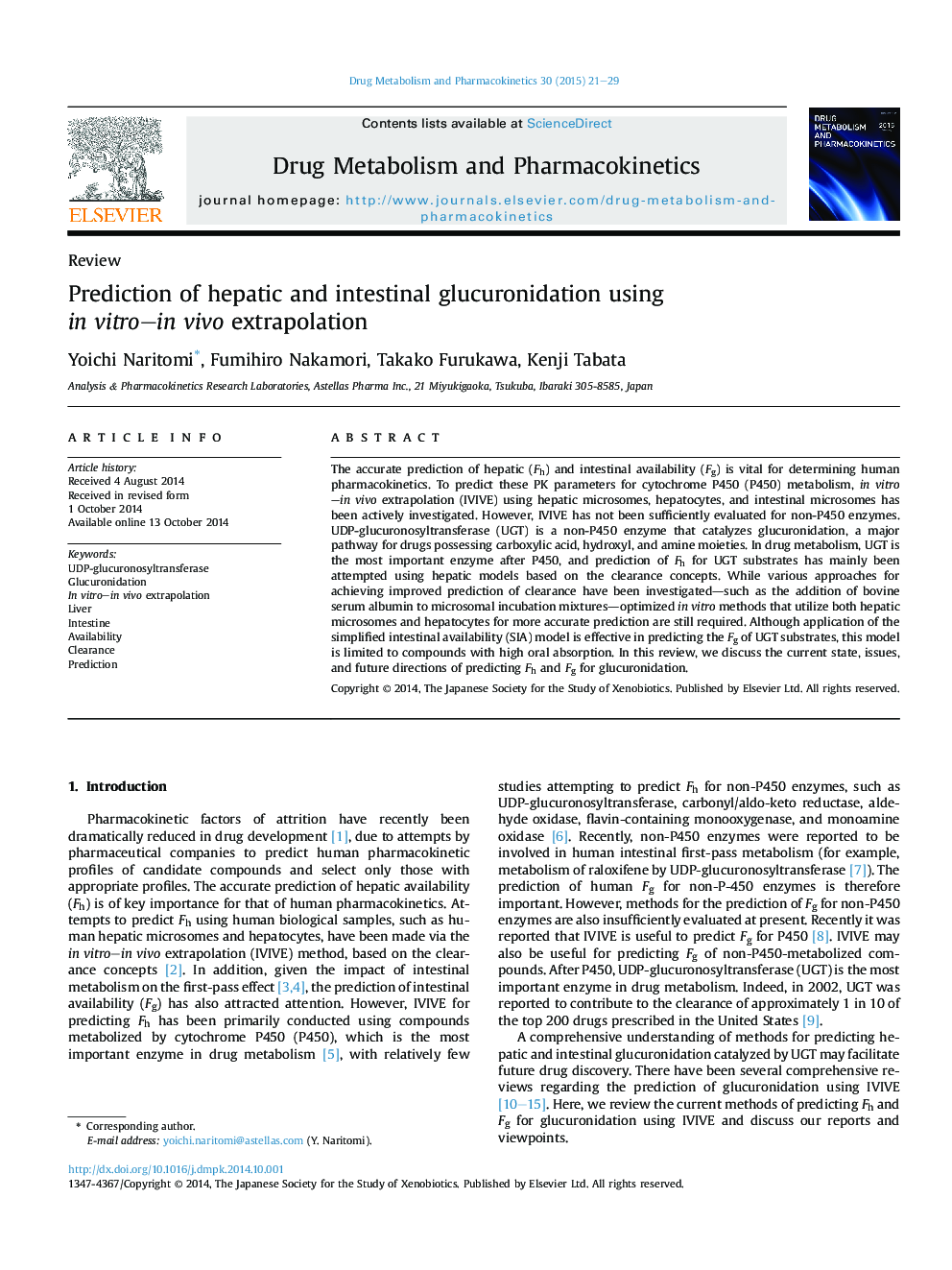| کد مقاله | کد نشریه | سال انتشار | مقاله انگلیسی | نسخه تمام متن |
|---|---|---|---|---|
| 2478897 | 1113410 | 2015 | 9 صفحه PDF | دانلود رایگان |
The accurate prediction of hepatic (Fh) and intestinal availability (Fg) is vital for determining human pharmacokinetics. To predict these PK parameters for cytochrome P450 (P450) metabolism, in vitro–in vivo extrapolation (IVIVE) using hepatic microsomes, hepatocytes, and intestinal microsomes has been actively investigated. However, IVIVE has not been sufficiently evaluated for non-P450 enzymes. UDP-glucuronosyltransferase (UGT) is a non-P450 enzyme that catalyzes glucuronidation, a major pathway for drugs possessing carboxylic acid, hydroxyl, and amine moieties. In drug metabolism, UGT is the most important enzyme after P450, and prediction of Fh for UGT substrates has mainly been attempted using hepatic models based on the clearance concepts. While various approaches for achieving improved prediction of clearance have been investigated—such as the addition of bovine serum albumin to microsomal incubation mixtures—optimized in vitro methods that utilize both hepatic microsomes and hepatocytes for more accurate prediction are still required. Although application of the simplified intestinal availability (SIA) model is effective in predicting the Fg of UGT substrates, this model is limited to compounds with high oral absorption. In this review, we discuss the current state, issues, and future directions of predicting Fh and Fg for glucuronidation.
Figure optionsDownload as PowerPoint slide
Journal: Drug Metabolism and Pharmacokinetics - Volume 30, Issue 1, February 2015, Pages 21–29
